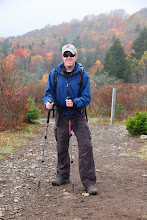Fire Building 101
Making a fire is neither easy nor hard. It isn't easy, because it requires preparation, patience, and elements that are sometimes out of your control. But it isn't hard if you know what you're doing!
First thing's first: the key ingredients to making a controlled, sustainable camp fire are 1) tinder, 2) kindling, and 3) fuel. Some examples of tinder are slender wood shavings (which you can easily make with your pocket knife), pine cone chips, pine needles, dead leaves, dry grass, cattails, and tiny twigs. Items like these are small and easy to ignite. They catch fire quickly but also go out quickly, which takes us to the next ingredient. Kindling consists mostly of narrow sticks, roughly the circumference of a pencil, perhaps bigger. Kindling will light on fire if the flame is hot enough, so having enough tinder to create a blazing "hot spot" is essential. The kindling, once lit, will form the backbone of your fire. One thing you can do to really get that kindling going is blow on it. There's no need to "huff, puff, and blow the whole house down," but controlled blowing will give the fire the oxygen it needs to grow. Then, it will burn long and hard enough to ignite the last ingredient. Fuel refers to larger pieces of wood that will burn for a long time, like a tree branch or even a stump. Only add the fuel to your fire after your kindling is secure and aflame.
The following video provides an excellent visual depiction of these steps in action.
When you're looking for tinder, kindling, and fuel, you should look in dry places. The ability to find dry wood is essential to building a sustainable fire. While you can burn wet wood, it is far more difficult to ignite; nor will it last as long. The best way to find dry wood is to look above the ground. However, in really wet conditions, sometimes you have no choice but to dig. Search for "nature heaps," places where trees have fallen, branches have piled on top of each other, leaves are clumped together. Sometimes, you can find dry wood beneath these piles, but you will have to dig, and there's no guarantee.
 Dead wood is also important. It will burn well, and the sound of dead wood crackling in the fire is soothing to the ears and good for morale. Green (alive) wood creates thick smoke and does not catch easily. Nor should you be chopping down living trees for fuel. However, if you are in need of a signal fire, green wood is the perfect choice, because it will create a visible plume of smoke, indicating your position. And in mosquito-infested regions, more smoke is often a blessing, since it keeps them at bay.
Dead wood is also important. It will burn well, and the sound of dead wood crackling in the fire is soothing to the ears and good for morale. Green (alive) wood creates thick smoke and does not catch easily. Nor should you be chopping down living trees for fuel. However, if you are in need of a signal fire, green wood is the perfect choice, because it will create a visible plume of smoke, indicating your position. And in mosquito-infested regions, more smoke is often a blessing, since it keeps them at bay.I took this photo last July on the top of Mount Rogers. It is a fire I will not forget, because it was so easy to make. Fire building is a skill that takes practice to develop. I'm still not an expert fire-maker, but it has gotten easier the more I have done it. With the right know-how and the patience to collect your ingredients, your fire-making endeavors will meet with success!
Next Up: Fire Building 201










No comments:
Post a Comment